World 🢖 Asia 🢖 India 🢖 Tamil Nadu
Hindu shrines 🢔 Religious architecture 🢔 Architectural wonders 🢔 Categories of wonders
Wonder
Mahishasura Mardini Cave
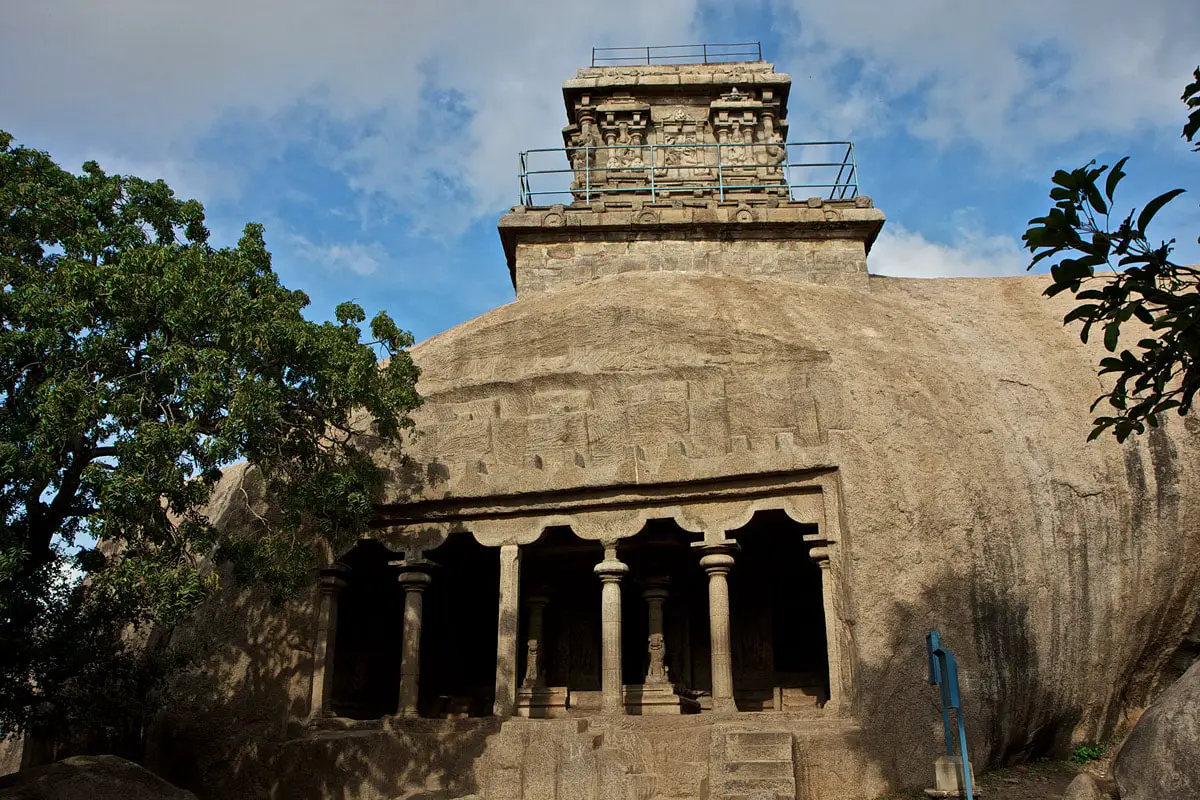
 In short
In short
Mahabalipuram contains 14 cave temples and several of these unique structures contain significant works of ancient art. One of them – Mahishasura Mardini Cave – contains several beautiful reliefs well demonstrating the artistic abilities of sculptors in Pallava times.
 32.3%
32.3%
GPS coordinates
Location, address
Alternate names
Age
Religion
UNESCO World Heritage status
Map of the site
If you see this after your page is loaded completely, leafletJS files are missing.
 In detail
In detail
This temple is not finished and does not contain any inscriptions. It is located at the base of diorite hillock, with another ancient structure – Olakkannesvara Temple on top of this hill.
The front part of the cave temple is adorned with four columns and two pilasters, the floor, and ceiling are not completed. Columns have different designs – the two central columns are different. Most likely this is explained by the attempt of Vaisnavites to remove them. One was really removed and was recently replaced by a low-quality replica.
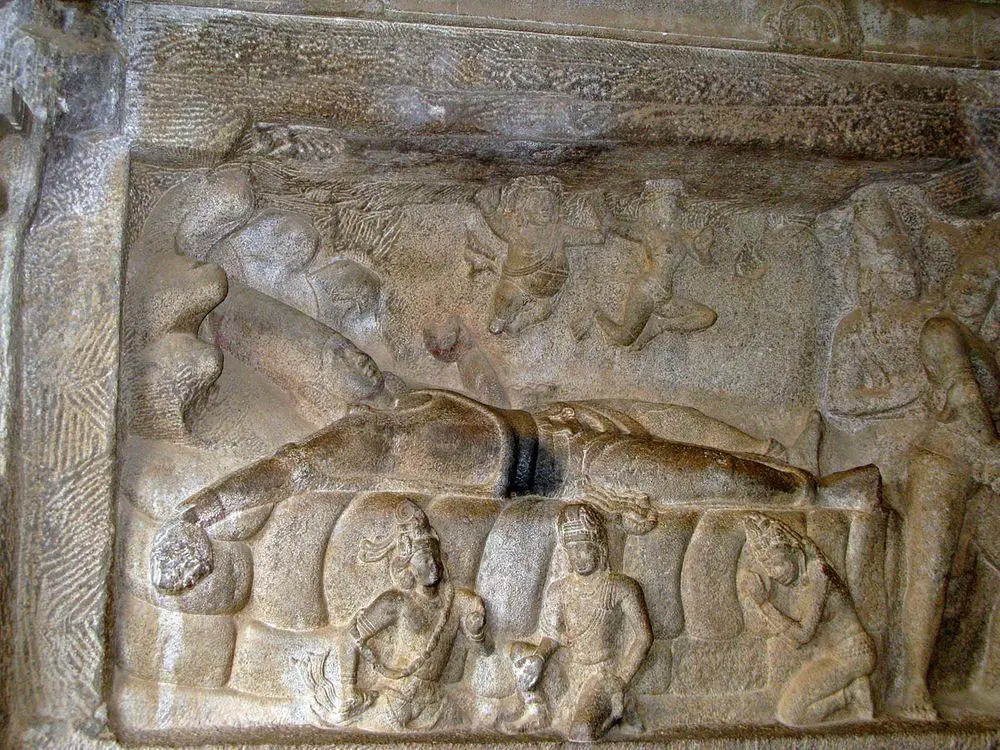
Both beautifully sculpted panels are placed at opposite sidewalls of the shrine. One relief depicts eight-armed Goddess Durga defeating the demon-king Mahishasura – it is possible that the temple got its name from this demon. Goddess is accompanied by eight ganas, Mahishasura with his army of seven demons is retreating.
Another panel depicts Anantasayana – e.g. Vishnu reclining on snake-like king of nagas – Ananta Shesha. This serpent has a thousand heads – relief shows five. Below Vishnu, there is Bhu-devi, Mother Earth. Above the God and below him there are shown four flying ayudh-purushas – divine weapons of Vishnu. This panel is considered to be one of the highest achievement in Indian ancient art.
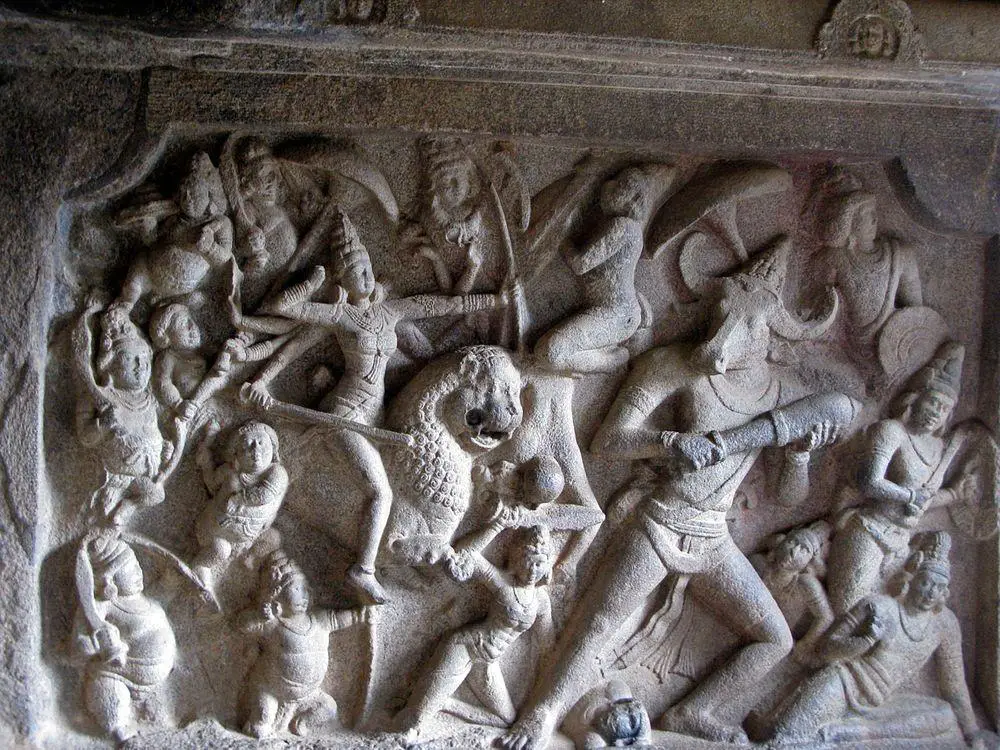
Rear wall contains three shrines. The central shrine is larger and is adorned with a porch. The porch, in turn, has a pair of beautiful pillars with horned lions – vyalas – at the base. All shrines are symbolically guarded by dvarapalas. Side shrines are not adorned but the central shrine is adorned with a large Somaskanda panel showing Shiva himself, his consort, Uma, divine child Skanda and Nandi at their feet and other gods in the background.
The choice of two unrelated religious motives on sidewalls is not clear today. It is also not completely clear why there were developed two shrines for Shiva and one for Vishnu.
References
- Mahishasura Mardini Mandapam, Tamil Heritage. Accessed on April 16, 2010.
 Linked articles
Linked articles
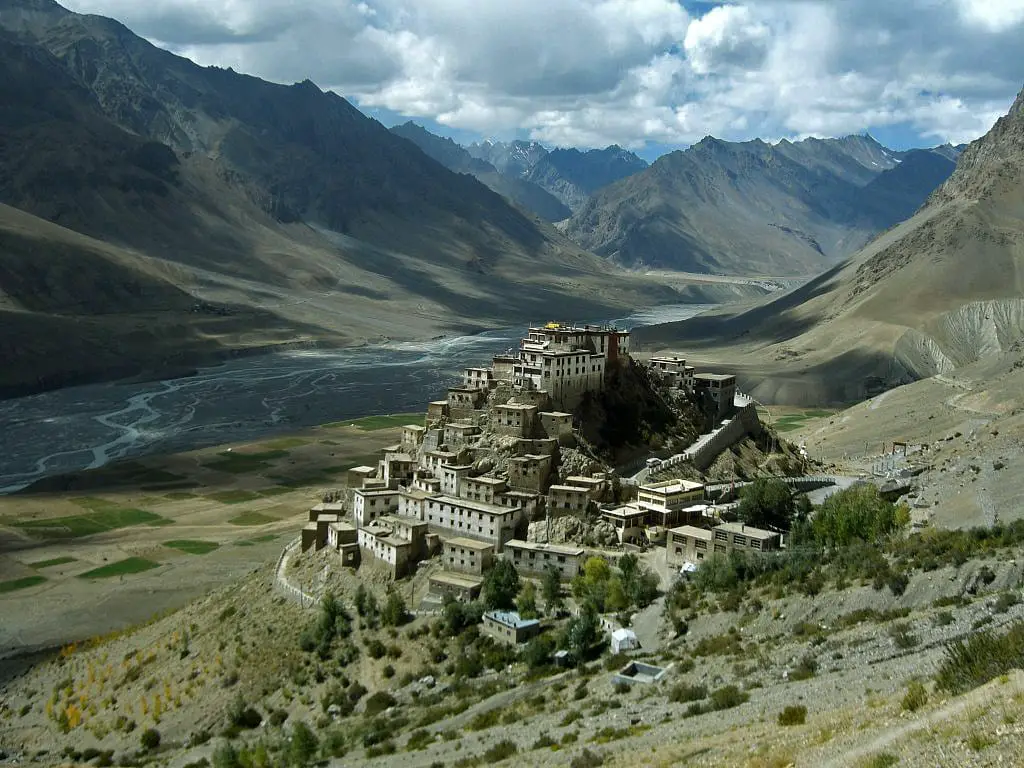
Wonders of India
India is the seventh-largest country in the world by area, and, naturally, such a large area contains a huge amount of exciting attractions…
Wondermondo considers that India is the second richest center of architectural heritage in the world after Europe and maybe no single country in the world can match it in this respect.
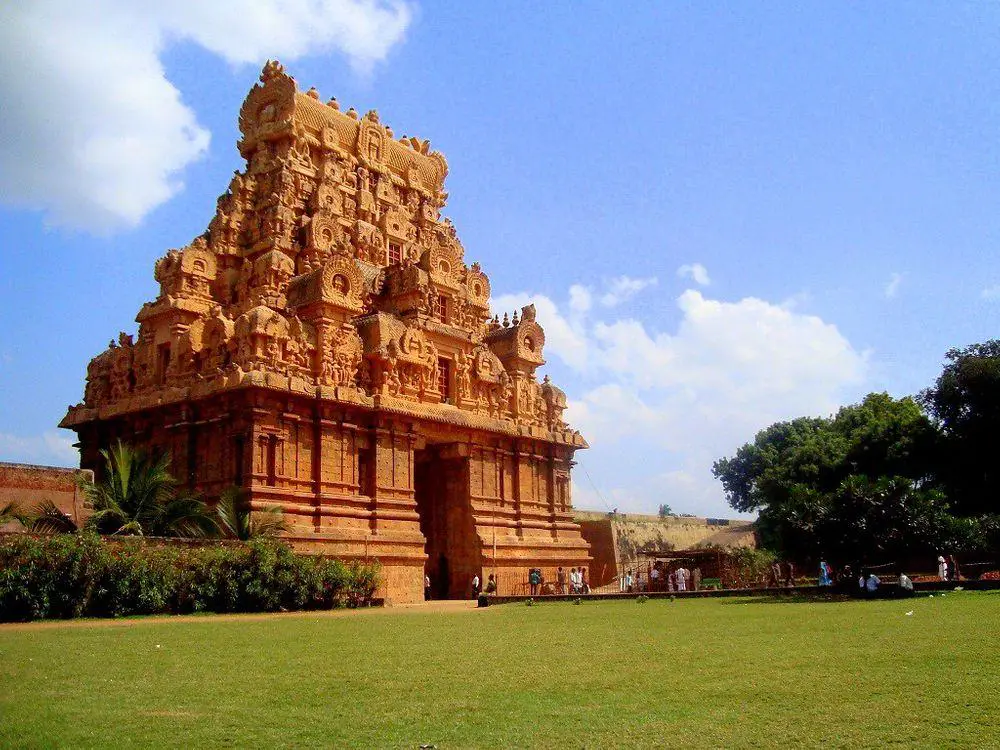
Hindu shrines
Hinduism is one of the oldest religions – possibly the oldest one among contemporary religions and Hindu temples belong to the most impressive religious buildings in the world.
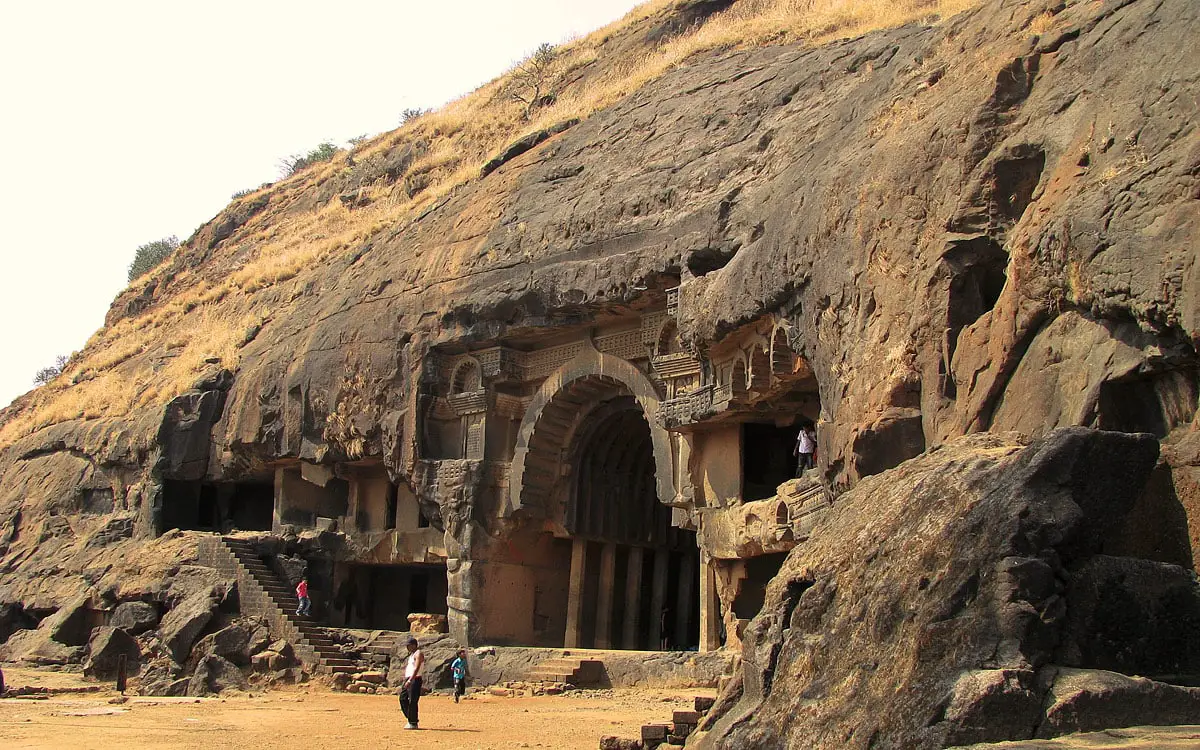
Rock-cut architecture and sculptures
Rock-cut architecture is a very ancient form of architecture – the oldest structures are more than 5 thousand years old. The resistivity of the natural stone and the constant climate inside these structures has preserved many art values around the world.
 Recommended books
Recommended books
Tamil Nadu: The Heart of Dravidian India
The huge temples of Tamil Nadu are justifiably famous. Through history and forty-four original photographs, this book explains how the temples came to be and what their statuary symbolizes. The book also paints a picture of what life was like in the civilizations that built them.
Mahabalipuram (Monumental Legacy)
Built in 700 CE by the famous Pallava king Rajasimha, Mahabalipuram is a unique monument where art form combines with religion and legends. Also known as Mamallapuram, it showcases the best of Tamil art and architecture. The beauty of the monument is further enhanced by its location on the shores of the Bay of Bengal, the latter significantly influencing the creations. Part of the prestigious Monumental Legacy series, this book presents a graphic account of the site and its monuments-mandapas (cave temples), rathas (chariots), open-air bas-reliefs, and structural temples.


